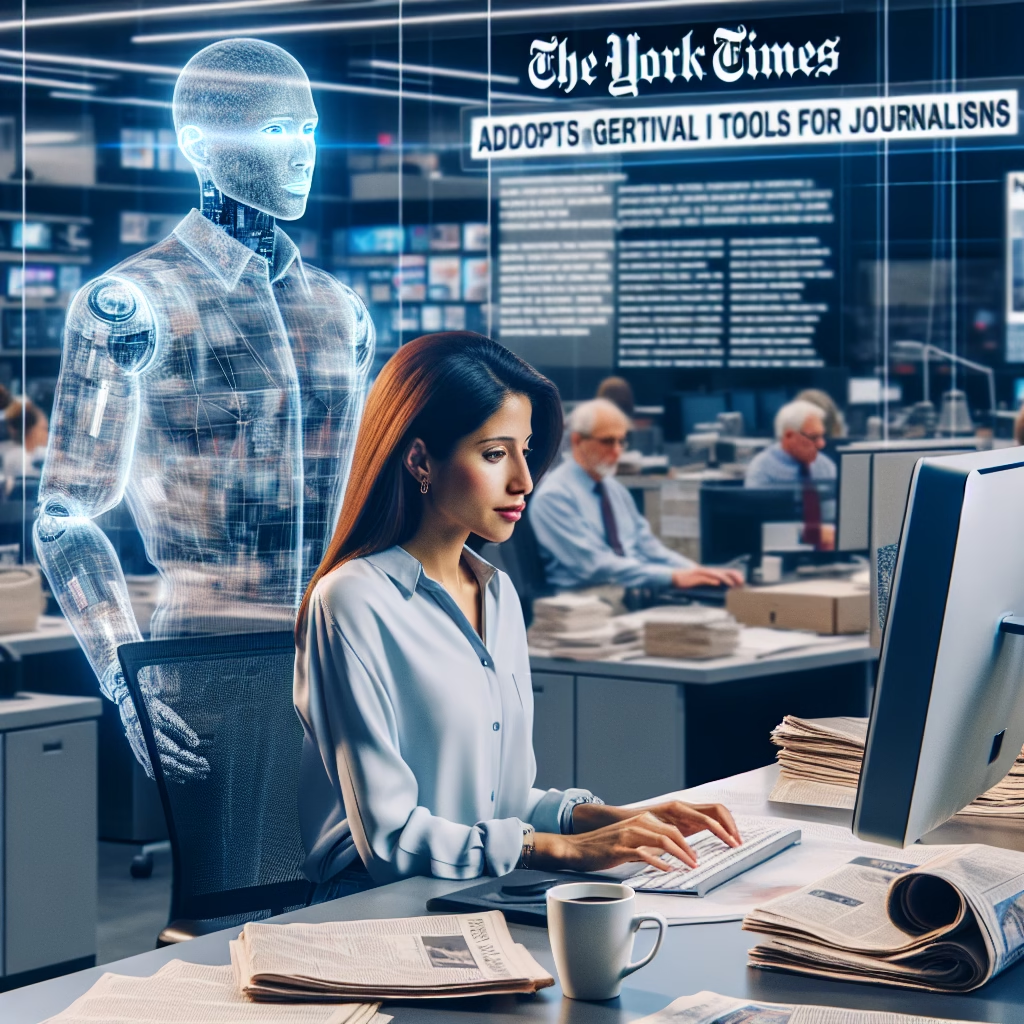New York Times Adopts Generative AI Tools for Journalists
In an age where artificial intelligence is reshaping industries, the New York Times (NYT) is taking a bold step forward by integrating Generative AI (GenAI) tools into journalism. This marks a significant evolution in how news is produced, optimized, and delivered to readers. But what does this adoption mean for journalists and the industry as a whole? Let’s dive deeper into the implications of this revolutionary change.
What is Generative AI in Journalism?
Generative AI refers to artificial intelligence models that can produce text, images, and even video content based on specific prompts. In journalism, these tools can be harnessed for:
- Automating data-heavy reports
- Generating summaries of lengthy articles
- Enhancing content personalization for readers
- Boosting efficiency in newsroom operations
Despite its advantages, AI adoption within one of the world’s most prestigious newspapers brings both excitement and concerns.
Why Is the New York Times Embracing AI?
The move to adopt generative AI tools aligns with the NYT’s strategy to enhance reporting processes while maintaining journalistic integrity. The primary reasons for this shift include:
1. Increasing Efficiency in News Production
Journalists often work against the clock to deliver timely news updates. AI enables faster content generation for breaking news and routine reports, allowing journalists to focus on in-depth investigative work.
2. Enhancing Personalization
With AI-powered recommendations, the NYT can refine content personalization, offering readers more relevant stories based on their reading habits and preferences.
3. Reducing Repetitive Tasks
Generative AI can help automate mundane tasks such as summarizing long reports or extracting key insights from datasets, giving journalists more time for deeper storytelling.
4. Competing in the Digital Age
The media industry is evolving rapidly, and newspapers must integrate AI to remain competitive against digital-native platforms with automated news generation capabilities.
Challenges and Ethical Concerns
Although the benefits of generative AI in journalism are substantial, challenges and ethical concerns remain.
1. Accuracy and Misinformation Risks
AI-generated content is not infallible. There have been cases where AI models introduced factual inaccuracies, leading to concerns about the reliability of news produced using these technologies.
2. Transparency in AI-Generated Content
Readers may have concerns about whether certain articles are written by humans or AI. Transparency in AI-generated content is critical to maintaining trust between news organizations and their audiences.
3. Potential Job Displacement
While AI streamlines newsroom operations, there is the looming fear that automation could lead to job losses. Media enterprises must strike a balance between leveraging AI and preserving human-led journalism.
4. Ethical Use of AI
The NYT has emphasized that AI tools should support—not replace—journalists. Maintaining editorial control and ensuring unbiased reporting remain top priorities as newsrooms experiment with AI-driven capabilities.
How the NYT Plans to Use Generative AI Responsibly
To avoid ethical pitfalls, the New York Times aims to use AI tools responsibly, ensuring that technology serves as an enhancement rather than a replacement. Strategies include:
- Maintaining human editorial oversight on AI-generated content.
- Clearly distinguishing human-written articles from AI-assisted pieces.
- Setting strict guidelines on where and how AI should be used in journalism.
- Continuously evaluating AI models to detect and correct biases.
The Future of AI in Newsrooms
The adoption of AI by the New York Times signifies a broader trend in journalism, where media outlets must evolve with technology while upholding their commitment to ethical reporting.
1. Increased AI Adoption in Other News Outlets
Following the NYT, other news organizations may accelerate their own exploration of AI to gain competitive advantages.
2. AI-Driven Fact-Checking
AI could be instrumental in verifying information, combating misinformation, and refining accuracy in journalism.
3. New Forms of Storytelling
With AI-generated multimedia content, journalism may expand beyond traditional text-based reporting, incorporating more interactive and immersive storytelling elements.
4. Ethical AI Regulations
As AI becomes mainstream in media, regulatory frameworks focused on ethical AI use in news production are likely to emerge, ensuring responsible implementation.
Final Thoughts
The integration of generative AI tools at the New York Times is a testament to how modern technology is shaping the future of journalism. While AI enhances efficiency, personalization, and storytelling, ethical considerations remain paramount.
For the NYT and other media outlets, the challenge lies in finding the perfect balance between automation and the human touch—ensuring that technology complements, rather than replaces, journalistic integrity.
As AI continues to unfold in the media industry, transparency, accountability, and responsible implementation will be key to making the most out of this transformative technology.
< lang="en">







Leave a Reply